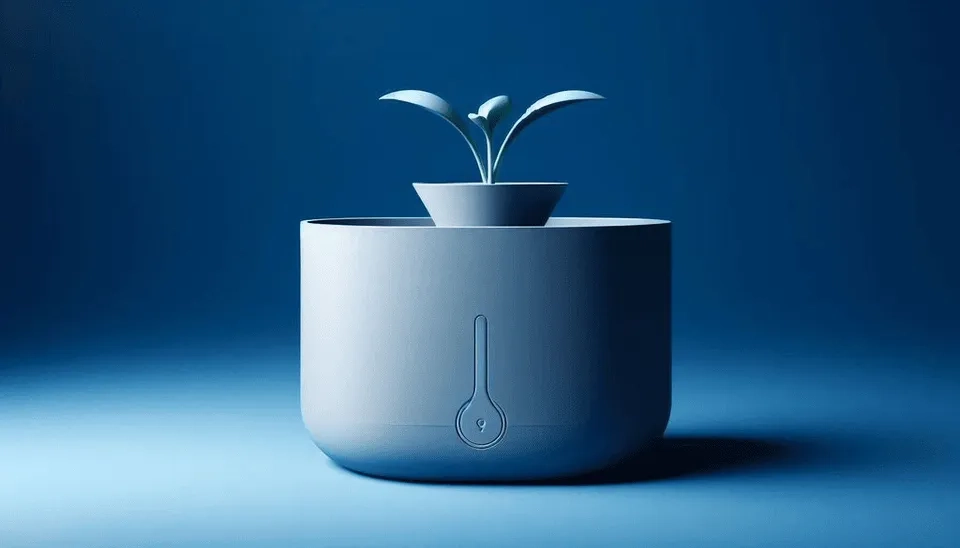
Self-watering planters are emerging and are becoming popular among people. If you want to purchase these products, follow this buying guideline, which provides a step-by-step and comprehensive buying guide for self-watering planters. Planters use sub-irrigation to deliver water directly to plant roots without any guesswork. The water reservoir at the bottom of the planter allows the plant to drink at its own pace and visually shows carers when it is time to water with an empty reservoir. Also, they have an overflow hole, so you can't overfill the reservoir, and thus you cannot overwater. Generally, the reservoir fills monthly, allowing your plant to take what it needs while avoiding overwatering. Self-watering planters maintain a balanced level of moisture, which is crucial for the healthy growth of plants. This consistent moisture availability ensures that plants have access to water as and when needed, leading to healthier, more robust growth. However, not all plants can tolerate a self-watering system, especially plants that need more water, such as aquatic plants that need consistently moist soil, will not thrive in a self-watering pot.
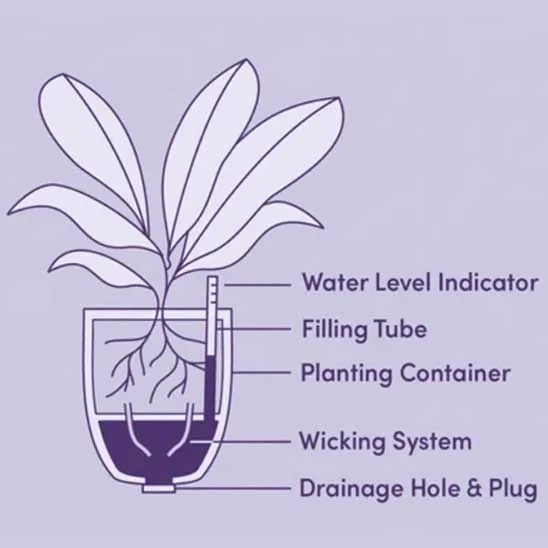
1. Key Considerations When Choosing a Self-Watering Planter
Purchasing a self-watering planter involves several influencing factors that must be considered to achieve the best results in selecting the best option, which will be discussed in this section of the buying guide. Here are some main factors to assist you in selecting the appropriate one:
1.1. Purpose and Application
The most important step in choosing a self-watering planter is determining your initial purpose and the application you want to use. Self-watering planters are designed to maintain the moisture of the plants, avoiding under- or over-watering. Therefore, they are useful for plants that use consistent soil moisture, like herbs, vegetables, and tropical plants. On the other hand, there are some plants that require constant watering, such as aquatic plants, for which self-watering planters are not useful. Frequent watering of plants is time-consuming for people. Therefore, self-watering planters are useful for busy individuals and people who travel frequently. These products are appropriate for the optimal growth of soil moisture-sensitive plants, reducing aeration around the root. So, if you have these types of crops, self-watering planters are the optimal choice for you. If your plants need fertilizer, some types of self-watering planters support this feature to add fertilizer by having a separate reservoir for it, ensuring nutrient supply.

The application of self-watering planters categorizes them as indoor and outdoor. For using self-watering planters inside, plants with a compact size, leak-proof reservoir, and ascetic design are better choices. While for using outside the house, a UV-resistant self-watering planter that can tolerate direct sunlight is better. In addition, it must have overflow drainage to evacuate excess water in case of heavy rainfall.
1.2. Types and Technology
Self-watering planters are available in different types and technologies to meet the plant's needs and user preferences, which will be accessed in this part of the buying guide. The types of self-watering planters can be categorized into 6 different types, including wick-based planters, subirrigation planters, passive hydroponic planters, smart self-watering planters, gravity-based planters, and modular self-watering systems.
1.2.1. Wick-Based Planters
In these planters, a wick that is made of absorbent material like cotton is placed between a water reservoir and soil so that one end is under the water and the other end is under the soil. The wick can facilitate the movement of water by absorbing water and moving it upward into the soil when it is needed, providing constant soil moisture by avoiding overwatering and underwatering. The wick uses capillary action to ensure that water moves to the soil roots. Wick-based planters are suitable for individuals with trees who do not have time to water their plants, as well as busy people who might forget to water their plants frequently. These planters are energy efficient; they do not use any electric pumps and work only by capillary action. Also, these planters are ideal for indoor use by providing water spilling. Plants like petunias, begonias, and parsley are appropriate for wick-based planters.

1.2.2. Sub-Irrigation Planters
Sub-irrigation planters use a water reservoir under a shallow tray or compartment where water can be stored, and for movement of water, capillary action is used. These planters are suitable for medium to large plants. One of the important parts of these planters is the size of the reservoir, which must be chosen based on the root size. Most of the sub-irrigated planters come with a water level indicator to show the level of water in the reservoir and when the users must refill the reservoir. Sub-irrigated planters usually have larger reservoirs and more complex water distribution systems than wick-based planters.
1.2.3. Passive Hydroponic Planters
Passive hydroponic planters are a combination of wick-based and sun irrigation plants. These planters can have multiple reservoirs, one of which can serve as a water supplier and another one that provides fertilizer for the plants, offering sustainable and steady growth of the soil. These self-watering planters are better for small to medium scales. Due to their complexity in structure, their prices are moderate to high. However, one of the disadvantages of passive hydroponic planters is that they need constant refills for fertilizer and water reservoirs.
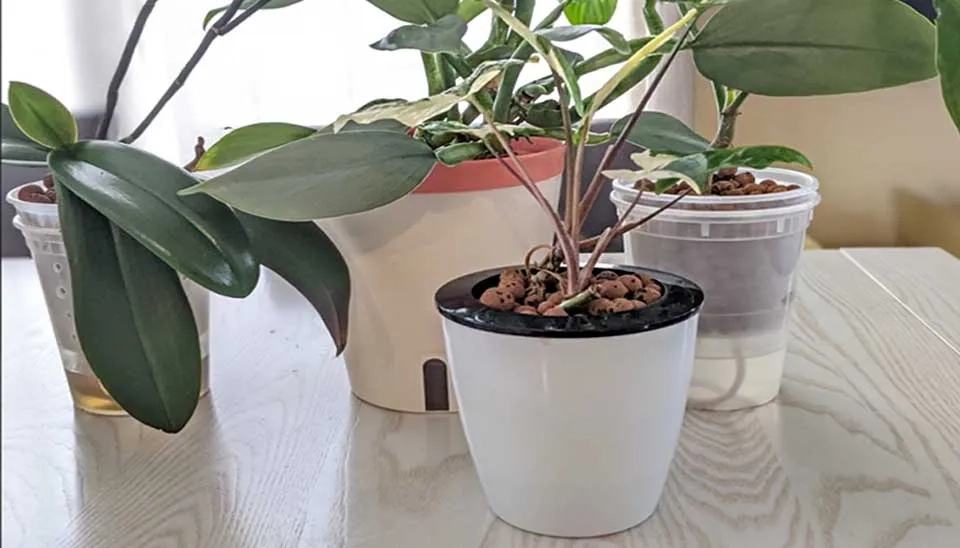
1.2.4. Smart Self-Watering Planters
In the current developing world, novel technology has emerged in various devices. Some smart self-watering planters are smart to optimize water and nutrient delivery, enhancing effectiveness to the maximum. These planters equipped with Wi-Fi and Bluetooth can connect to the apps and send data on temperature, humidity, soil moisture and light. The users can remotely control the sensors and order watering or set a threshold below a certain soil moisture, the planters automatically start watering. The apps that integrate with a sensor can provide real-time data for soil health, efficiency and water level continuously. The smart self-watering planters are energy efficient and can recharge by solar energy and USB charging. In addition, users can customize the setting for a specific plant type based on the type of plant. However, these planters can cost more than other types depending on technology; therefore, in case of a loss, the planters are not functional. In addition, the sensors and technology inside them might need recalibration and frequent maintenance.
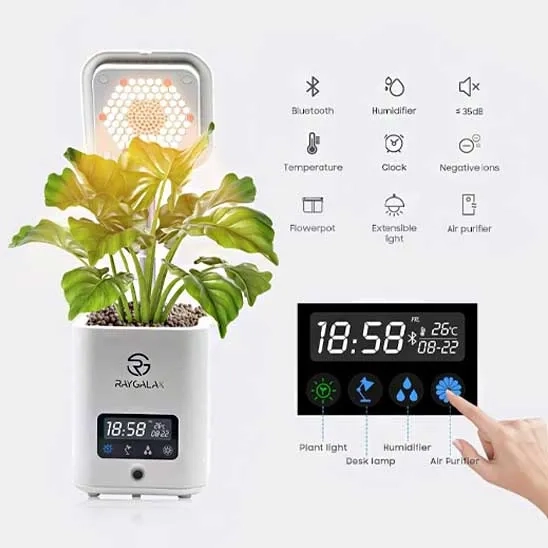
There are different smart self-watering planters on the market. For example, the RG RayGalax Smart Planter is one of them, providing a 100-ml tank for the plant and 100-ml for the humidifier. Its small LED grow lights for indoor plants are fully automatic and deliver the water according to the moisture level in the soil.
1.2.5. Modular Self-Watering System Planters
Modular self-watering systems Planters can be connected together to develop a large gardening system. They have customizable designs that allow users to adjust the settings based on their needs. Like other types of self-watering planters, the modular ones also have reservoirs to provide constant moisture for the plants but also offer modularity and adaptability. With these systems, users can adjust the size of their system to fit their spaces, such as vertically stacking single lines or even circular arrangements. The modular self-watering planters have some drawbacks, including a higher cost than other types and their initial setup might be complex if the number of planters and pipes is high.
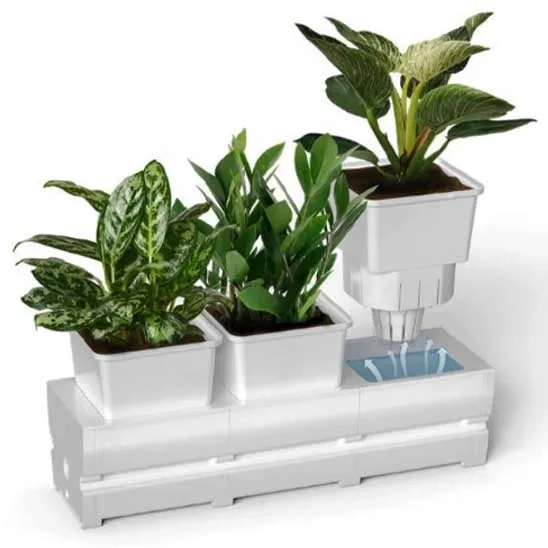
1.3. Water Reservoir Capacity
The size of the reservoir is crucial because it determines how often it needs to be refilled. The reservoir must be large enough to sustain the moisture levels required by your plant but not so small that it necessitates constant refilling. Generally, reservoir capacities in self-watering planters range from small (0.5- 1 liter) for compact indoor plants to large (5–10 liters) for bigger plants or outdoor use. For most indoor plants, a reservoir with a capacity of 1–2 liters can supply water for approximately a week, depending on the plant's water requirements and environmental conditions. Larger reservoirs, particularly those above 5 liters, can provide moisture for up to two weeks, making them ideal for individuals with busy schedules or for plants with higher water demands. Additionally, some self-watering planters come with a water level indicator to signal when the reservoir needs refilling, ensuring plants receive consistent hydration without the guesswork.

1.4. Size and Plant Growth
Plant size and the rate of its growth are important and determine which self-watering planters are appropriate for you. You need to choose the size of the planters based on your plant types. For example, vegetables or shrubs require planters that need deeper soil and larger reservoirs to have optimum growth and shallow planters are not suitable for these types because they need proper root development. If the size is too small, the plants’ roots become root-bound, meaning the roots strangle to each other, minimizing the plant's growth. Some planters need a great amount of nutrients; therefore, consider the volume of the soil as well. Also, the more soil you have, the more the soil can retain the moisture, minimizing the frequency of refilling.

1.5. Water Regulation Systems in Self-Watering Planters
Self-watering planters usually have water management systems that regulate moisture levels within the planter. These systems are essential for maintaining optimal soil moisture while preventing overwatering and waterlogging. Excess water can be problematic in self-watering planters, as stagnant water around the roots can lead to root rot. Therefore, an effective water regulation system should include overflow outlets and ventilation mechanisms to maintain proper hydration without oversaturation. There are different types of water regulation mechanisms in self-watering planters. The most traditional one is the bottom overflow outlet, which allows excess water to drain out once the reservoir reaches capacity, preventing water from accumulating in the soil. Another common system is overflow channels, which consist of small openings at the base of the planter that release excess water before the soil becomes oversaturated. Additionally, air vents are another useful feature in self-watering planters. These small openings, located either at the base or within the planter, promote air circulation around the roots, helping to prevent excessive moisture buildup. Another method, previously mentioned in the buying guide, is the wicking system. This system uses a wick, often made of fabric or string, to draw water upward from the reservoir into the soil as needed. This ensures that the plant can access water whenever the soil moisture level drops, providing a balanced and efficient hydration method.

1.6. Maintenance
The maintenance requirements of self-watering planters will vary significantly with their design and functions. Modular self-watering planters, for instance, require constant checking as they are more prone to waterlogging due to their internal water supply system. Adequate water circulation and the prevention of excess moisture buildup are important to maintaining the health of the plants in modular designs. Regardless of type, all self-watering pots must be cleaned periodically to prevent dirt, mineral buildup, and algae from the reservoir. Algae can grow in stagnant water and can clog the system and reduce its efficiency over time. Planters with an overflow pipe or drainage holes must be checked periodically to ensure they remain open so water can drain freely out and won't rot the roots. For smart self-watering planters, added attention should be taken to preserve the accuracy of their automated operations. The sensors measuring the moisture in the soil can be periodically calibrated and cleaned in order to maintain their accuracy. Any technology elements, such as water level detectors, should also be inspected from time to time in order to prevent them from breaking down. Periodic maintenance not only extends the life of the planter but also enables plants to receive the optimal level of hydration without risking over- or under-watering.
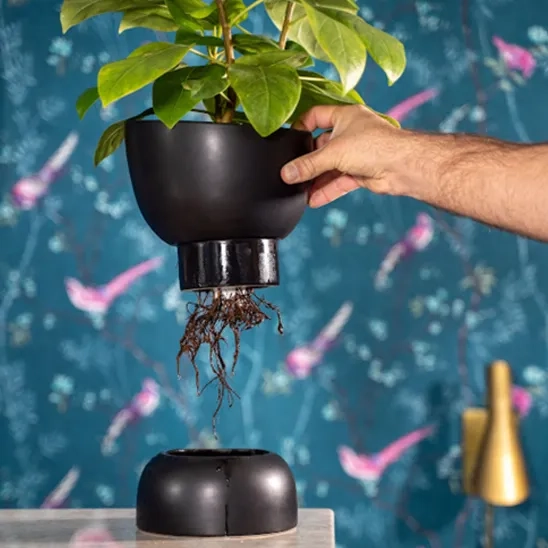
1.7. Material of the Planter
Self-watering planters can have a variety of materials, such as plastic, ceramic, terracotta, and fiberglass, and should be used based on their need and application. The most common material is plastic, which is lightweight, durable, and can withstand rainfall, cheaper than other types and also comes in different colors that customers can select based on their taste. However, if you plan to use them outside and under direct sunlight, they can degrade quickly. The ceramic planters are more aesthetic, making them suitable for indoor usage. The thick ceramics can maintain the temperature and soil moisture better. However, they are heavier and more difficult to move. Also, ceramics are vulnerable to extreme conditions, such as high or very low temperatures, and might crack under these circumstances. Planters with terracotta material are lightweight, and microscopic holes enable the circulation of moisture in the soil. Although, it is not suitable for cold climates due to the risk of freezing. Fiberglass planters are not only durable but also lightweight, as well as resistant to extreme weather events. Finally, resin is another popular material for self-watering planters that typically copies the appearance of natural objects such as stones or wood. They are durable, can withstand extreme events and are less prone to cracks. However, their price is typically higher than plastic-based self-watering planters.
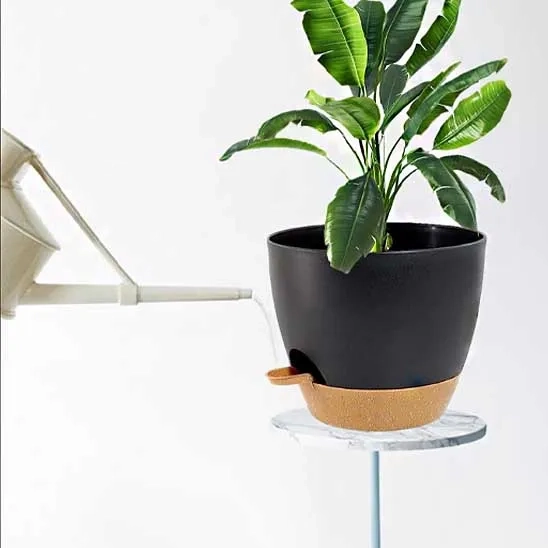
1.8. Aesthetic Appeal
In addition to the functionality of the self-watering planters, their aesthetic appeal is important as well to match your decoration. They offer a variety of designs and styles, from modern to traditional ones. Users can choose among them based on their decoration and taste. Furthermore, self-watering planters come in different shapes, such as rectangles, squares, or customizable shapes that users can select based on their space. Moreover, some of the planets offer customization, such as decorative sleeves, to better blend into your indoor or outdoor environment.
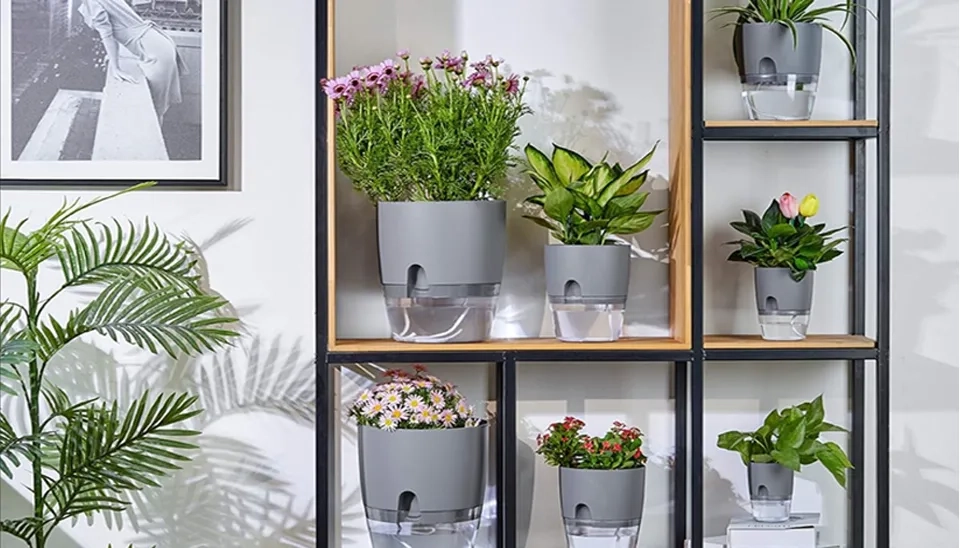
1.9. Cost and Budget
When choosing a self-watering plant, the price is important, which can determine your preliminary choices. The price of the self-watering planters is influenced by the type of watering system, planter material and size, reservoir capacity and additional features. Self-watering planters’ prices generally fall in the range of $20 to higher than $100. Self-watering planters with simple designs and plastic materials are at the lower end, while those with fiberglass and more advanced drainage systems and smart ones typically have higher costs. In addition to the initial costs, there are costs of replacing wicking material or sensors as well. These continuous maintenance expenses need to be included in the total investment when assessing various planters.

1.10. Customer Service
Customer service can boost the experience of the users of self-watering planters. You don’t want a device without further support from its manufacturer because you might face difficulties in using the device or in case of a sensor failure. A responsive company helps its users in each step to improve the best experience for the customer by helping in the calibration process to boost the accuracy of the device and troubleshooting issues in cases of sensor malfunctions or connectivity issues. More advanced models need initial setup and configuration that companies can offer service in this area. Warranties are another factor that should be considered in case of failure if the device is needed. Some companies offer free repairs or replacement options during the warranty period. A responsive company also continues to support customers beyond the warranty period, ensuring easy access to replacement parts. When customers encounter problems, companies should offer live chat, phone support, or email communication to address their concerns. Additionally, some companies create online forums or social media groups where customers can share their experiences, which is valuable as it allows them to discuss common issues that products may face.
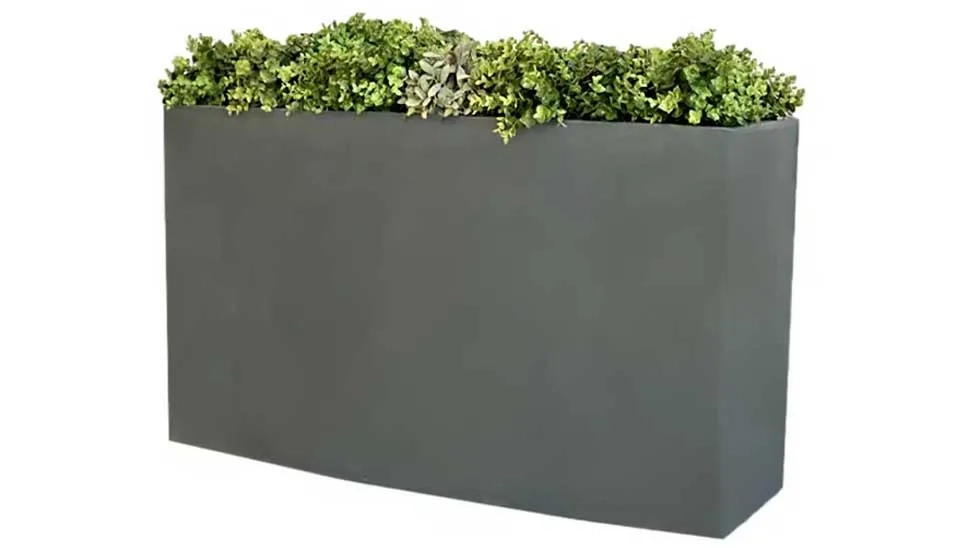
1.11. Product Ranking
By considering all the criteria that we have mentioned, you can choose the best self-watering planters by making an informed decision. One of the online platforms that can help you in the process of selecting is Amazon, where you can compare different products and read comments and reviews. In addition to this, read our article, ‘Top 8 Self-Watering Planters for Plant Lovers in 2024. ' In this article, ranking the self-watering planters was based on Bayesian ranking rather than traditional methods. This method uses both average rating and several total reviews. In the article mentioned above, Vanavazon self-watering planter pots ranked first among the available self-watering planters on the market. These self-watering plant pots are designed to store water and feed indoor plants for a week or more, making it easier than ever to maintain your plants when you are busy. These African violet pots are crafted from premium-quality plastic material that is formaldehyde-free, nonpoisonous, and heat- and cold-resistant. These pots are safe and durable, making them suitable for long-term use. Its high-tenacity and high-strength construction ensure that your plants are well supported and cared for.

2. Comparing Different Types of Self-Watering Planters
In this section of the buying guide, we examine various self-watering planters to guide you toward the best selection. It is essential to compare different self-watering planters based on their features to make an informed decision.
2.1. Wick-Based Self-Watering Planters
Wick-based planters use absorbent materials, such as cotton or synthetic fibers, to transport water from the reservoir to the soil through capillary action. These planters are energy-efficient as they do not require electric pumps or complex mechanisms to function. They are particularly suitable for indoor use, as they help prevent water spillage and maintain consistent soil moisture levels. However, they may not be ideal for plants with high water demands, as wicks deliver water at a slower rate compared to other systems.
2.2 Smart Self-Watering Planters
Smart self-watering planters are equipped with Wi-Fi and Bluetooth connectivity, allowing users to monitor and control them via mobile apps. These planters feature advanced sensors that measure environmental conditions such as temperature, humidity, soil moisture, and light levels. Users can remotely adjust watering schedules or set automatic thresholds where the planter waters the plant once the soil moisture drops below a certain level. While these planters offer convenience and precision, they are generally more expensive and require regular maintenance, including sensor calibration and occasional battery or software updates.
2.3 Modular Self-Watering Planters
Modular self-watering systems consist of multiple interconnected planters that can be combined to form a large-scale gardening system. These systems are highly customizable, allowing users to adjust layouts in various configurations, such as vertical stacks, single lines, grids, or circular arrangements, to fit different spaces. They are ideal for urban gardeners, rooftop gardens, or large-scale indoor plant setups. However, modular planters tend to be more expensive than traditional self-watering planters, and their initial setup can be complex, especially if the system includes multiple planters and water distribution pipes.
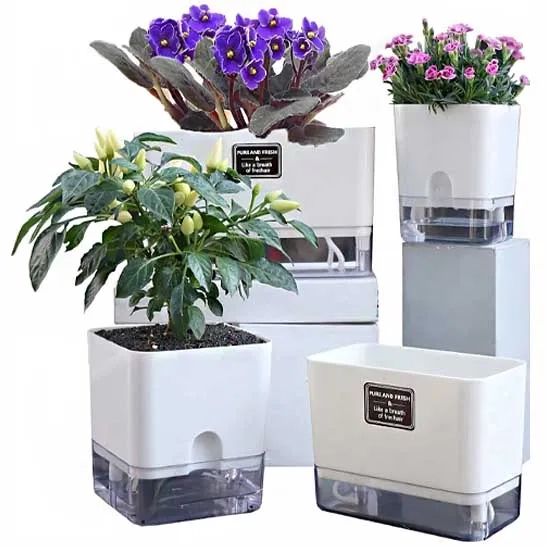
3. Assessing Your Specific Needs Before Purchase
Evaluate your particular needs before purchasing an appropriate self-watering planter and it is vital to select a product that adequately fulfills your requirements, which consist of the material type, watering system, and setting a reasonable budget. By following these steps, knowledgeable purchases that match your usage objective can be guaranteed.
It is important to identify the watering system and material relevant to your needs when choosing the best self-watering planters. The first step is considering the environment where you plan to place the planters. For outdoor use, the material must be durable enough to withstand extreme weather conditions, such as high or low temperatures. Plastic planters are lightweight but may degrade quickly under direct sunlight. Ceramic planters are aesthetically pleasing but are vulnerable to extreme conditions, which may cause cracking. Terracotta materials are lightweight and allow moisture circulation, but they are not suitable for cold climates due to the risk of freezing. Fiberglass and resin planters are ideal for outdoor use as they withstand extreme weather and are less prone to cracking, although they tend to be more expensive than plastic planters. For indoor use, fiberglass planters are a better choice, offering both aesthetic appeal and a variety of colors. Additionally, consider the size of the plants you are growing when choosing the right planter: for small plants like herbs or succulents, wick-based planters work well as they provide consistent moisture through capillary action. Medium-sized plants, such as flowers or ferns, benefit from modular planters, which allow flexibility in system expansion. For large plants like shrubs or small trees, look for planters with larger reservoirs to reduce the need for frequent refilling. Large planters made from sturdy materials like fiberglass or resin are also ideal, as they provide the space and moisture retention needed for bigger root systems. If space is limited, vertical or stackable planters are perfect for maximizing growing space in smaller areas.

3.2. Set Your Budget
The price of the self-watering planters is vital, which can vary significantly based on elements like drainage type, size of the planters and reservoir, material and brand. By determining the budget, you can narrow down your options. The self-watering planters range between $10 and more than $100. The more expensive ones have high capacity, more advanced drainage systems and fibreglass or resin made. The table below summarizes some models and features with their prices.
Table 1. Some self-water planters in the market along with their price and features | Budget-Friendly Self-Water Planters Buying Guideline for Plants.
Product | Feature | Price |
Vanavazon 6 Inch Self-Watering Planter Pots | Made of new plastic material, and it is formaldehyde-free, non-poisonous, and heat-and-cold resistant | $16.99 |
Wousiwer 10 inch Self Watering Planters | Mesh drainage holes on the bottom of flower pots that keeps soil drained and ventilated. | $21.96 |
Vego Garden Planters for Outdoor & Indoor Plants | Water level gauge and a curved trellis designed | $99.95 |
Mayne Fairfield 20 in Square Planter | Resin material and durable under the extreme events | $109.99 |
Glowpear Self Watering Planter Box | UV stable with scalable wall mounts and a water gauge | $110.99 |
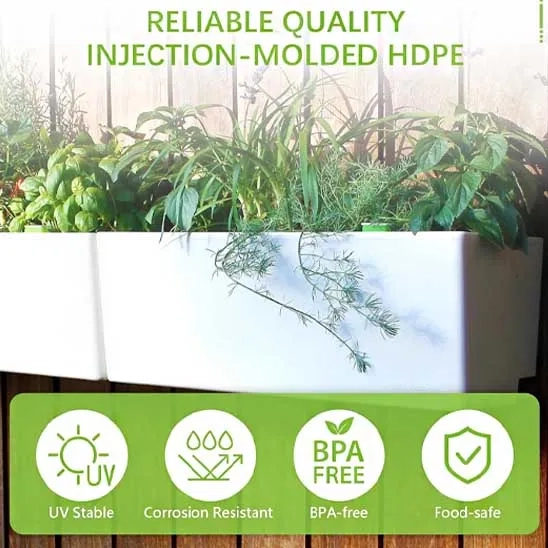
4. Mistakes to Avoid When Choosing Self-Watering Planters
When choosing a self-watering planter, there are certain key factors that need to be known to avoid any mistakes, which will be evaluated in this part of the buying guide. One of the most common mistakes is to overlook the plant's size and need, which is directly related to the type of the plant that you want to grow. The first mistake is selecting a planter that is too large or small for a tour plant. Make sure that the self-watering planters are large enough to cover your plants growth as well as their root development. Another factor is material durability. If you want to use the planters outside, the fibreglass and resin materials are better since they can withstand extreme weather conditions. However, for indoor applications, plastic material and lightweight materials are better and easier to move. Another element is the reservoir size because some plants need more water and if the reservoir is too small, you need more frequent refilling. Another mistake is not knowing the system that best fits your plants. For example, wick-based planters are suitable for small plants, while modular-based and sub-irrigated planters are appropriate for bigger plants. While self-watering planters can water the plants and maintain the soil moisture, they often need maintenance in case of sensor failure in smart water planters or cleaning the reservoir and drainage system. Therefore, it is essential to invest time in maintenance if you don't have the time to try choosing the simple self-watering planters with minimum care. Another subtle fact to consider is seasonal variation. In hotter months, water can evaporate easily, decreasing the soil moisture. Therefore, if you want to use the self-watering planters outside, select a model that has a large reservoir to support the plant's needs. The last factor is the aesthetic design. Before purchasing, understand the color, space and size of the planters to best fit your decoration.
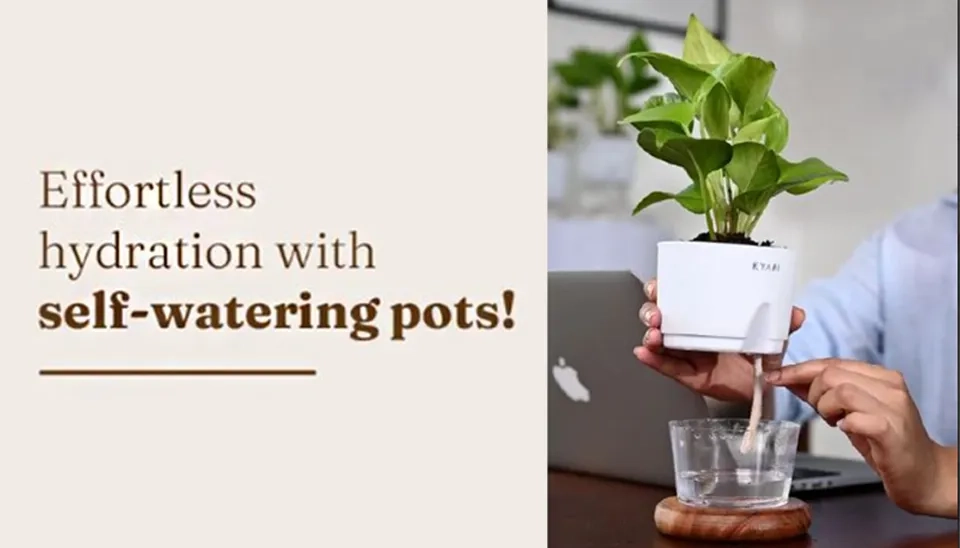
5. Checklist for Choosing the Best Self-Watering Planters
Have you recognized the watering system that is best based on your application? (e.g., wick-based , sub-irrigated, passive hydroponic, smart, gravity-based, modular, etc.)
Have you recognized the main application? (e.g. in door, out door, etc.)
Have you identified the best color and size based on your decoration ?
Do the self-watering planters come with the technological features you need? (Consider connectivity, such as Wi-Fi or Bluetooth connection.).
Have you considered reliable connectivity and prompt alerts? (e.g., SMS, or app notifications to stay hydrated).
Does the expense align with your budget while maintaining the overall requirements and keeping the right balance between expense, features, and durability over time?
Are the materials durable and align with the environment in which you plan to use the products? (plastic, fiberglass, resin, etc.)
Have you searched for the customer service and availability options? (e.g., warranty, professional assistance , return policy, rapid delivery, packaging, free monitoring service and responsiveness)
Have you searched product rankings and reviews to ensure reliability? (e.g., Bayesian Rank, buying guides, reviews, comments, etc.)
6. Where to Buy Self Watering Planters
Currently, various companies offer self-watering planters. To maximize your experience, try to select a well-known company in this area. Companies like Lechuza offer self-watering planters with various materials and water level indicators. Vivosun offers a wide variety of indoor and outdoor products, including self-watering planters. Another company is D'vine, providing a range of planters with affordable prices. And lastly, Planterhoma is another company in this realm. These are the pioneering companies in the field of self-watering planters. It is better to buy from these Companies that are reputable in these fields and produce various types of self-watering planters are the best choice. Amazon is a wonderful choice, offering a wide range of self-watering planters along with detailed customer reviews, ratings, and comparisons. Such information helps buyers easily evaluate each product's performance and quality based on real user experiences. Additionally, Amazon provides a secure purchasing process, swift shipping, and exceptional customer support, making it a highly convenient and reliable platform. For bulk orders or better pricing, Alibaba is another trusted option, particularly for businesses looking to make wholesale purchases or buy directly from manufacturers. With its extensive product range, supplier network, and competitive pricing, Alibaba is often the preferred choice for large-volume orders, especially when customization options are needed.
7. Conclusion
This buying guideline provides an extensive guide for buying self-watering planters, including key factors like drainage type and technology, material, size, and other criteria. This buying guide supports different types of self-watering planters, including wick-based, sub-irrigated, passive hydroponic, smart, gravity-based, and modular. Each one of them offers unique advantages and drawbacks. In addition, the material type and size are discussed in this article. In the end, this buying guide has provided a checklist that individuals can use before buying self-watering planters to make sure to consider every single detail, optimizing their selection. With this comprehensive buying guide of self-watering planters, users can choose a device that not only meets their needs but also adapts to future requirements, ensuring efficient water quality and potentially saving on maintenance and costs.
